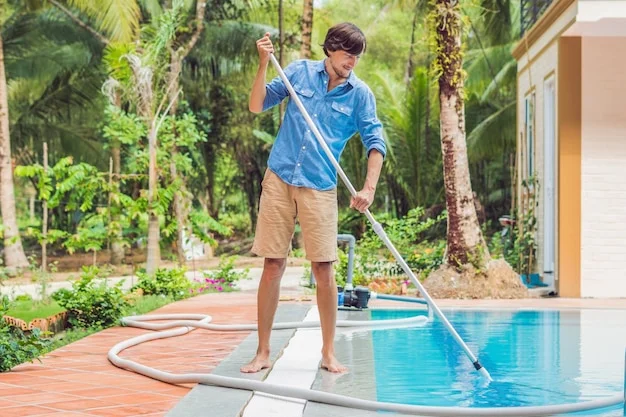A swimming pool is more than just a backyard feature—it’s a place for relaxation, entertainment, and making memories. But like any part of a home, pools experience wear and tear over time. Cracks in the surface, outdated equipment, or a design that no longer fits your lifestyle may indicate that pool renovation is needed.
Renovating a pool isn’t just about aesthetics; it’s also about improving functionality, energy efficiency, and safety. Whether a pool needs a simple resurfacing or a full transformation, knowing when to renovate and what to expect can help homeowners make informed decisions.
When Does a Pool Need Renovation?
Not all signs of wear mean a pool needs to be completely rebuilt. However, certain red flags indicate that a renovation is the best way to restore both appearance and function.
🔹 The Surface is Cracking or Stained
- Gunite/concrete pools often develop surface cracks over time. While minor cracks may be cosmetic, larger cracks can lead to leaks.
- Stains from chemicals, algae, or minerals can become embedded in the surface, making the pool look old and uninviting.
- Resurfacing the pool can restore its original look and extend its lifespan.
🔹 Outdated Pool Equipment is Raising Costs
- An old, inefficient pump or filter can significantly increase energy bills.
- Modern pool equipment repair can improve energy efficiency and reduce maintenance efforts.
- Upgrading to variable-speed pumps, automated systems, and LED lighting makes maintenance easier and more cost-effective.
🔹 Leaks or Water Loss is Becoming a Problem
- If a pool loses water faster than normal evaporation rates, it may have a hidden leak.
- Leaks can damage the surrounding deck, plumbing, and structure.
- A professional inspection can determine whether repairs or a full pool renovation are necessary.
🔹 The Pool’s Design Feels Outdated
- A pool built 10-20 years ago may not reflect current styles or homeowner preferences.
- Adding modern features like beach entries, tanning ledges, or water features can make the pool more enjoyable.
- Reconfiguring steps, seating areas, or the shape of the pool can transform its usability.
🔹 The Deck or Tile Surrounding the Pool is Deteriorating
- Loose or cracked tiles and faded coping affect both appearance and safety.
- Updating the pool deck with new materials, such as travertine or stamped concrete, can refresh the entire backyard aesthetic.
Types of Pool Renovations to Consider
Depending on the condition of the pool and the homeowner’s goals, renovations can range from simple upgrades to complete transformations.
🔹 Resurfacing the Pool Interior
- Gunite/concrete pools require resurfacing every 10-15 years to maintain integrity.
- Options include plaster, pebble finishes, and quartz coatings, each offering different textures and durability.
- Fiberglass pool construction involves repairing gel coats to eliminate surface cracks and discoloration.
🔹 Upgrading Pool Equipment
- Installing energy-efficient pumps and heaters reduces operating costs.
- Automated pool systems allow remote control of temperature, lighting, and water features.
- Saltwater conversions replace chlorine systems for a gentler swimming experience.
🔹 Adding Water and Fire Features
- Waterfalls, bubblers, and deck jets create a more dynamic pool environment.
- Fire bowls and poolside fire pits enhance nighttime ambiance.
🔹 Enhancing the Pool Deck and Coping
- Replacing worn-out tiles with modern stone, wood, or textured concrete improves safety and aesthetics.
- Expanding the deck creates more space for seating and lounging.
🔹 Incorporating Smart Technology
- Automated chemical monitoring ensures balanced water quality.
- LED lighting allows homeowners to customize color schemes for nighttime swimming.
What to Expect During a Pool Renovation
Once a renovation is planned, understanding the process helps homeowners prepare for the project.
🔹 Step 1: Inspection and Consultation
- A professional pool contractor will assess the pool’s current condition.
- The homeowner will discuss goals, budget, and timeline.
- Necessary permits may be acquired if structural changes are involved.
🔹 Step 2: Draining and Prepping the Pool
- The pool is drained, and any demolition (removing old tile, coping, or plaster) takes place.
- If structural repairs are needed, they are completed before resurfacing or refinishing.
🔹 Step 3: Equipment and Feature Upgrades
- New pumps, filters, or heating systems are installed.
- Smart automation features are integrated for improved usability.
🔹 Step 4: Surface Resurfacing and Tile Installation
- For gunite/concrete pools, resurfacing involves applying new plaster, pebble, or tile finishes.
- Fiberglass pools may require a gel coat repair or full resurfacing.
- Coping and tilework are updated as needed.
🔹 Step 5: Refilling and Water Balancing
- Once renovations are complete, the pool is refilled.
- Water chemistry is carefully adjusted to ensure a safe swimming environment.
🔹 Step 6: Final Inspection and Enjoyment
- The homeowner does a walkthrough with the contractor to ensure satisfaction.
- The newly renovated pool is ready for use.
How Often Should a Pool Be Renovated?
The frequency of renovations depends on the pool’s construction, usage, and level of maintenance.
🏊 General Guidelines:
- Gunite/concrete pools: Resurfacing every 10-15 years; equipment upgrades every 5-10 years.
- Fiberglass pools: Repairs as needed, with a resurfacing or recoating every 15-20 years.
- Deck and tile updates: Every 10-15 years, depending on wear and exposure to elements.
Routine weekly pool maintenance and timely pool equipment repair can delay the need for major renovations, keeping a pool in great condition for longer.
Is a Pool Renovation Worth It?
Investing in a pool renovation can improve not only the appearance but also the efficiency and functionality of a swimming pool.
✅ Reasons to Renovate:
- Enhances property value and appeal.
- Improves safety by updating older features.
- Reduces maintenance costs with energy-efficient equipment.
- Adapts the pool to current needs, such as adding kid-friendly features or a more modern design.
Final Thoughts
A pool renovation is an opportunity to refresh and upgrade a backyard’s most valuable feature. Whether it’s fixing cracks, upgrading equipment, or completely redesigning the pool area, renovations enhance both the beauty and functionality of a swimming space.
For homeowners considering a pool upgrade, POOL-ology offers expertise in pool renovation, pool design and build, and pool equipment repair. With the right improvements, a pool can become more enjoyable, efficient, and visually stunning—making every swim feel like a brand-new experience.







